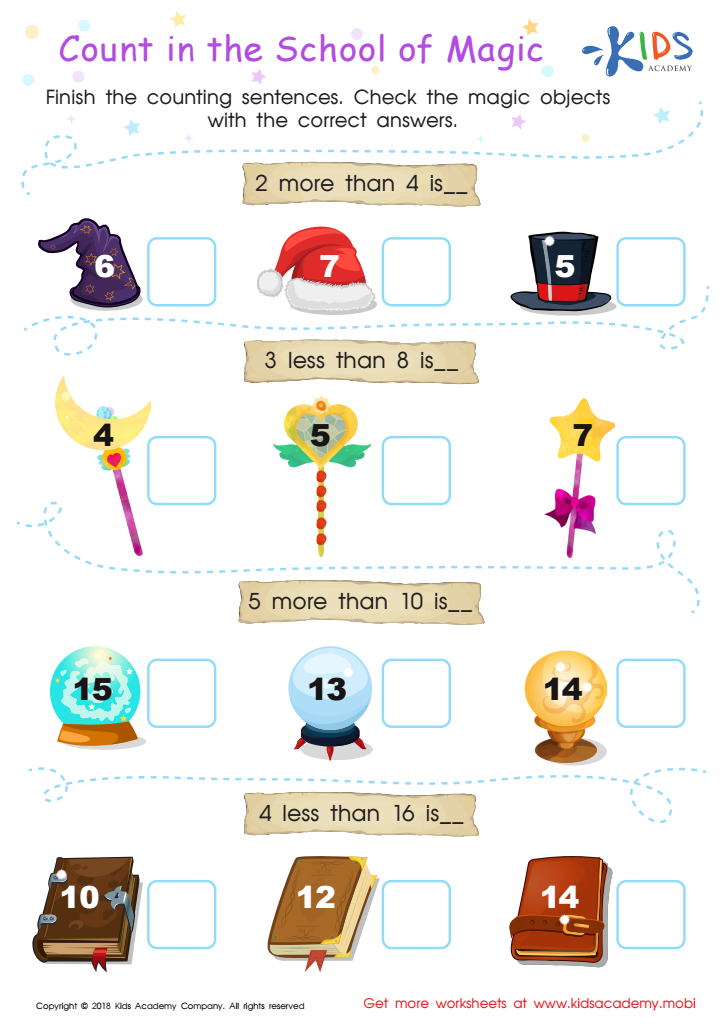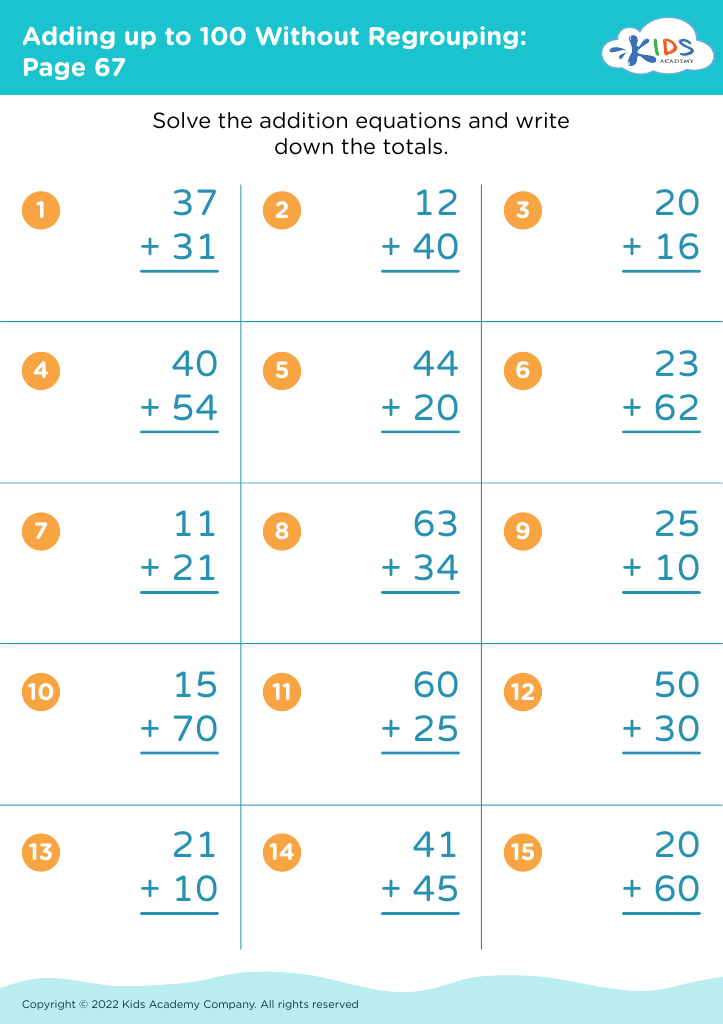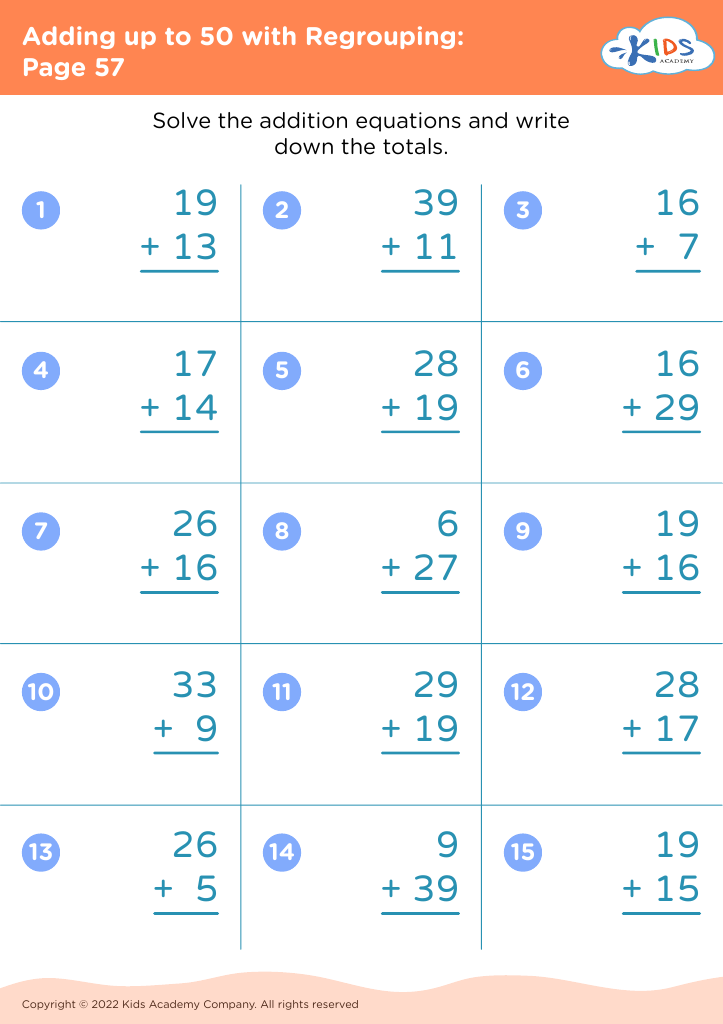Pattern identification Addition & Subtraction Worksheets for Ages 7-8
3 filtered results
-
From - To
Enhance your child's mathematical journey with our engaging Pattern Identification Addition & Subtraction Worksheets, designed specifically for ages 7-8. These worksheets focus on recognizing patterns while mastering addition and subtraction skills, fostering essential problem-solving abilities in young learners. Each activity encourages critical thinking as children identify numeric trends and relationships, all while boosting their confidence in math. Crafted with vibrant illustrations and age-appropriate challenges, these worksheets make learning both fun and effective. Download now to give your child a head start in comprehending mathematical concepts through pattern recognition, setting a solid foundation for their future success in math!


Count in the School of Magic Worksheet
Pattern identification in addition and subtraction is a vital skill for children aged 7-8, as it forms the foundation for their mathematical understanding and critical thinking. At this developmental stage, children are beginning to think more abstractly, and recognizing patterns not only aids them in performing calculations more efficiently but also enhances their problem-solving abilities.
By mastering patterns, children can quickly detect trends and relationships in numbers, which streamlines mental math skills and boosts their confidence in handling mathematical tasks. Furthermore, pattern recognition encourages persistence. When children face challenging problems, recognizing patterns can help them break down difficult concepts into manageable parts, promoting a positive attitude towards learning.
Parents and teachers should consciously integrate pattern identification into their everyday practices and lessons. Engaging children with colorful resources, games, and hands-on activities can make learning enjoyable and interactive. This foundational skill does not only support academic success in math but also lays the groundwork for higher-level mathematics concepts they will encounter later, such as algebra and geometry. Ultimately, by fostering pattern recognition in early learners, adults empower them with the tools they need for lifelong mathematical proficiency and critical thinking.


 Assign to My Students
Assign to My Students




















